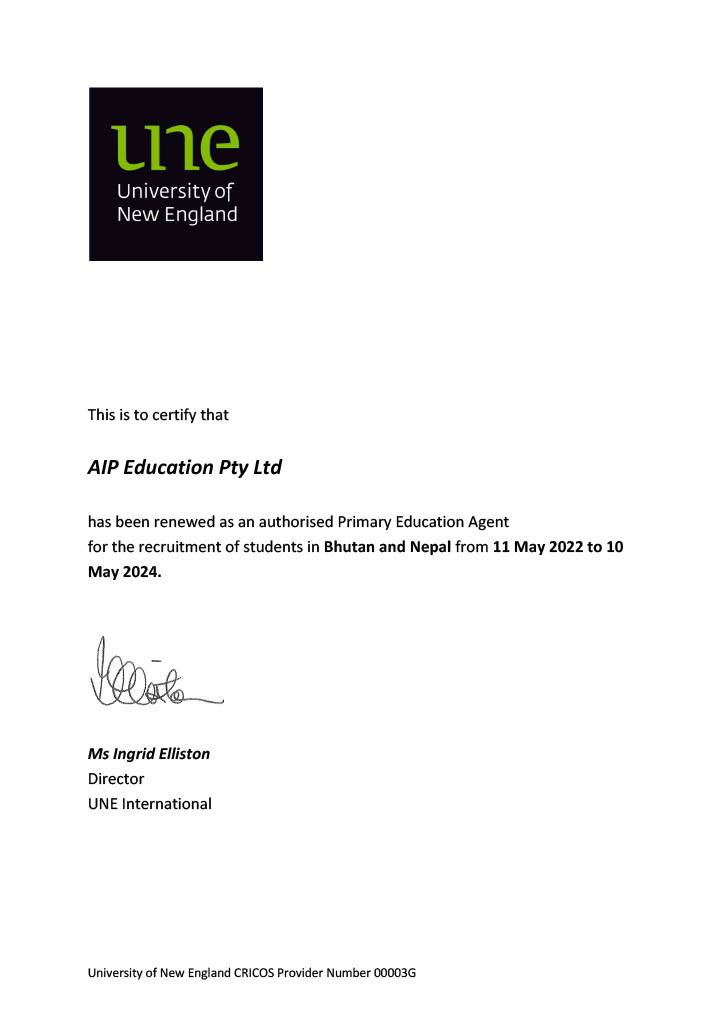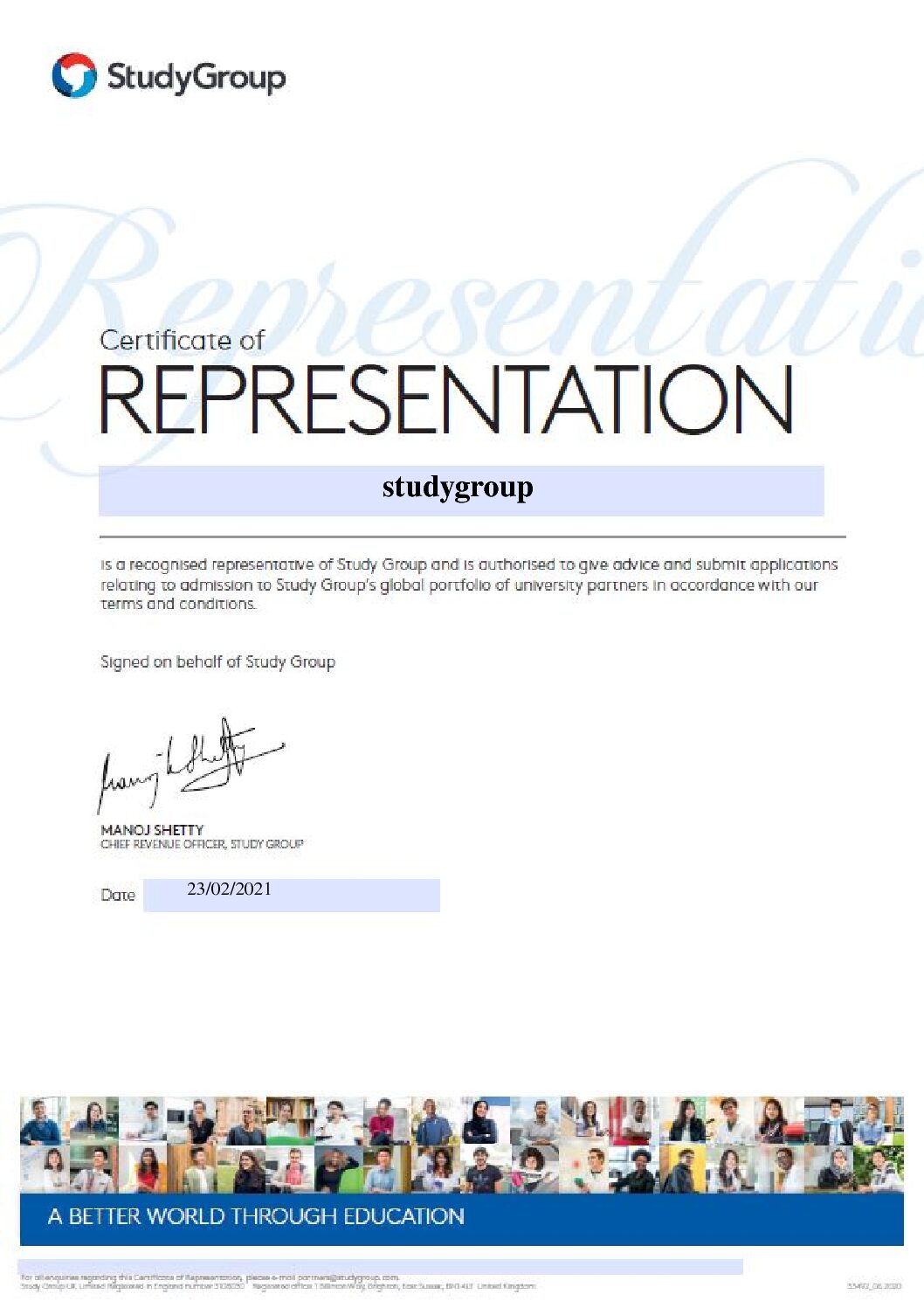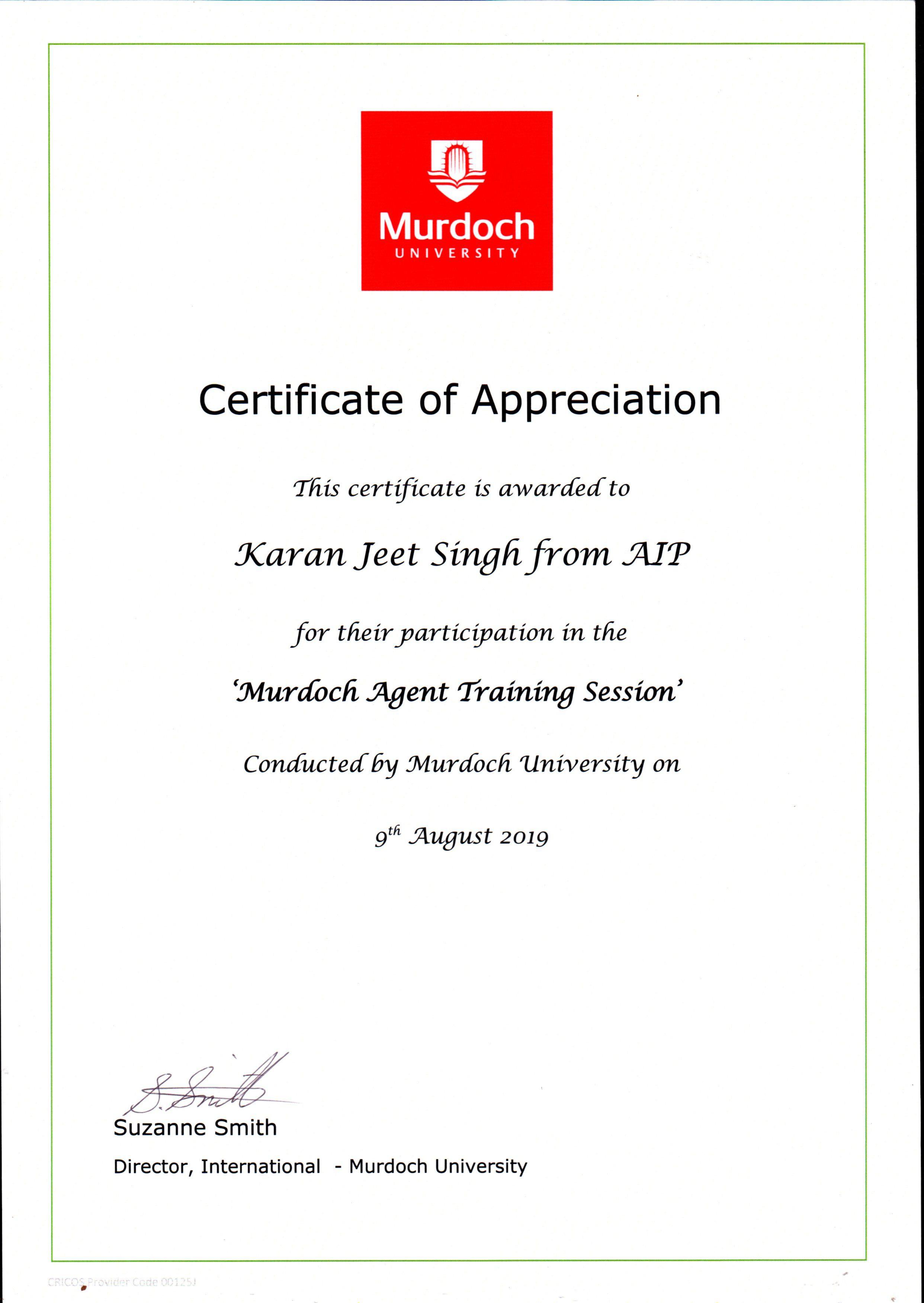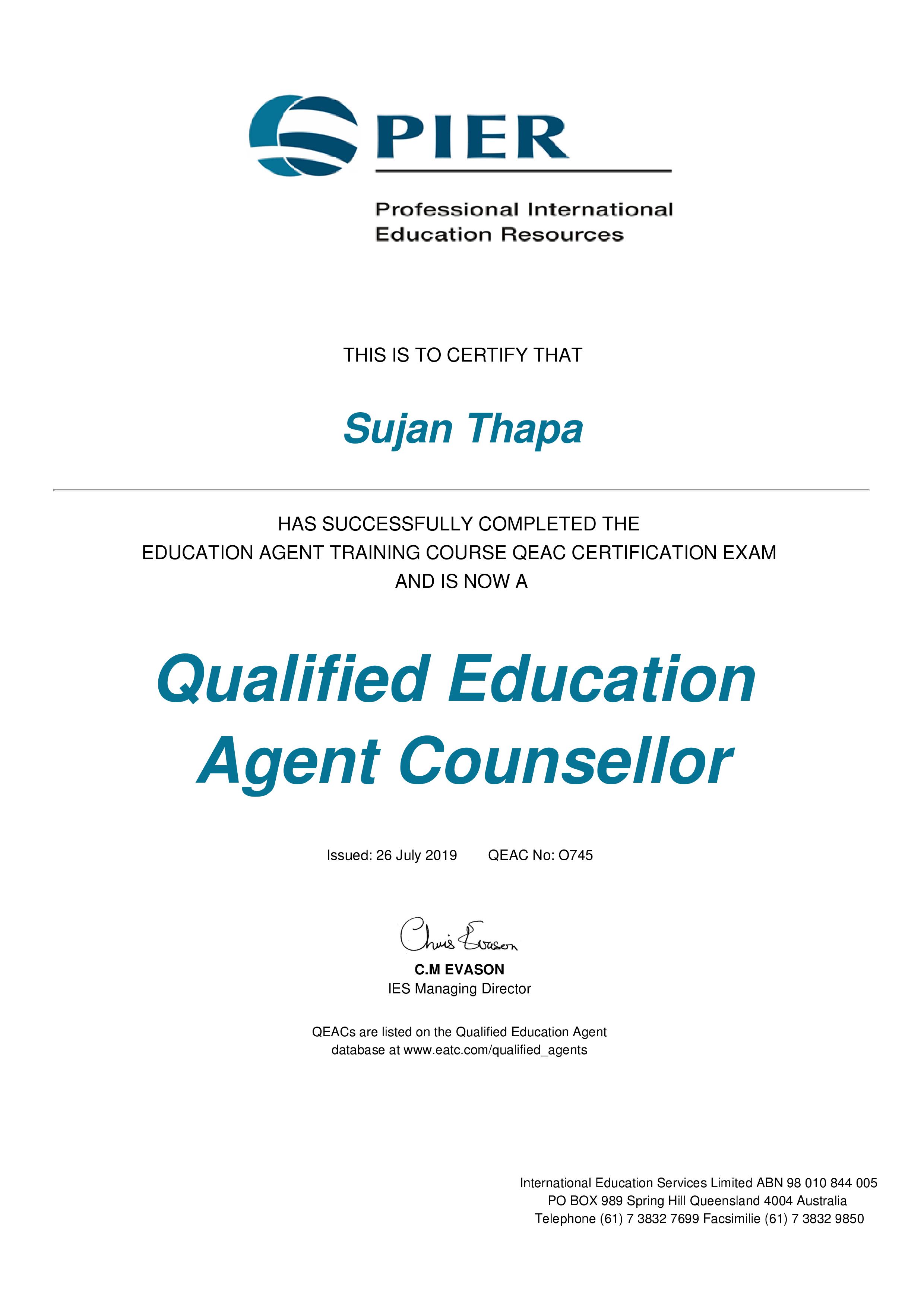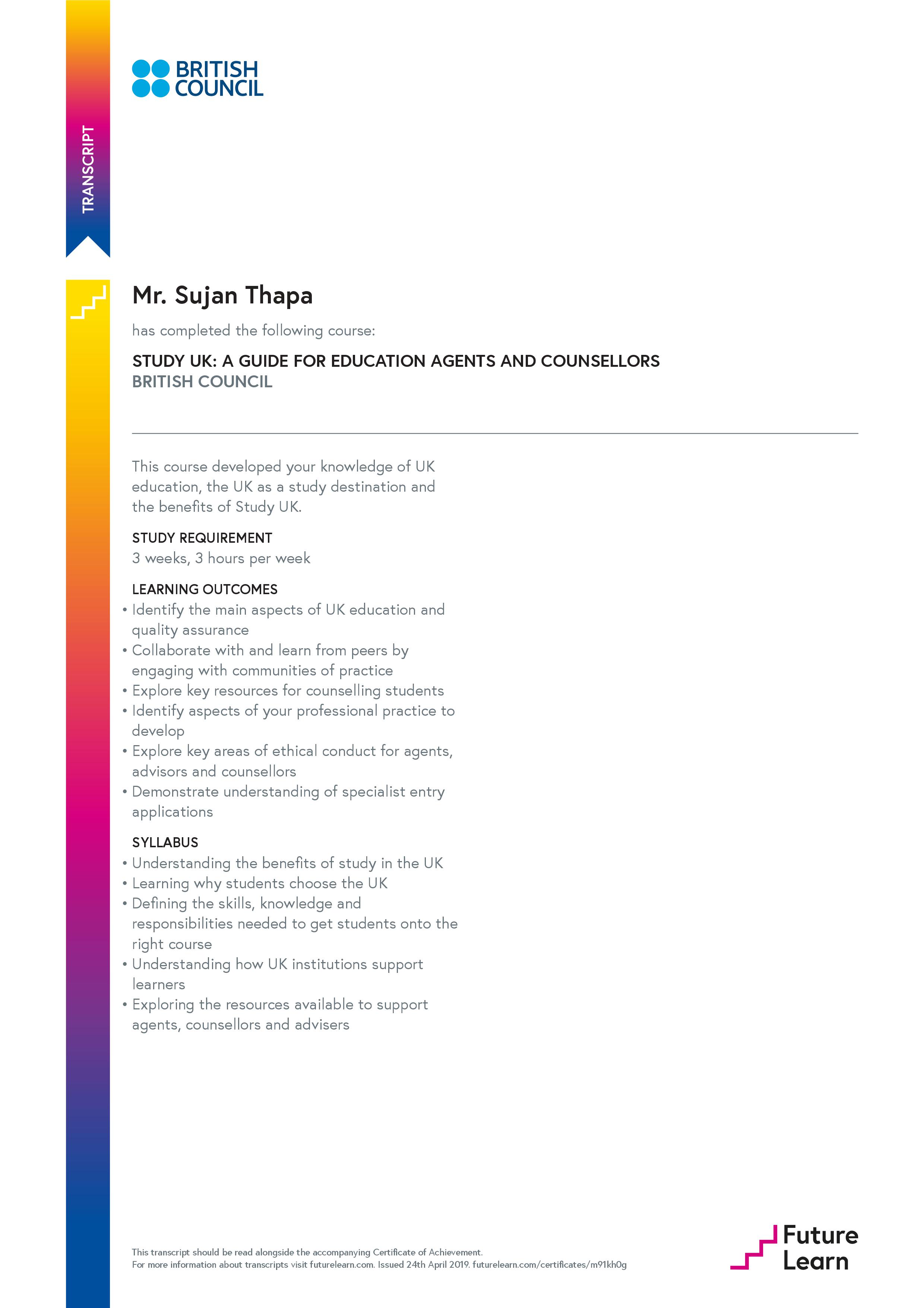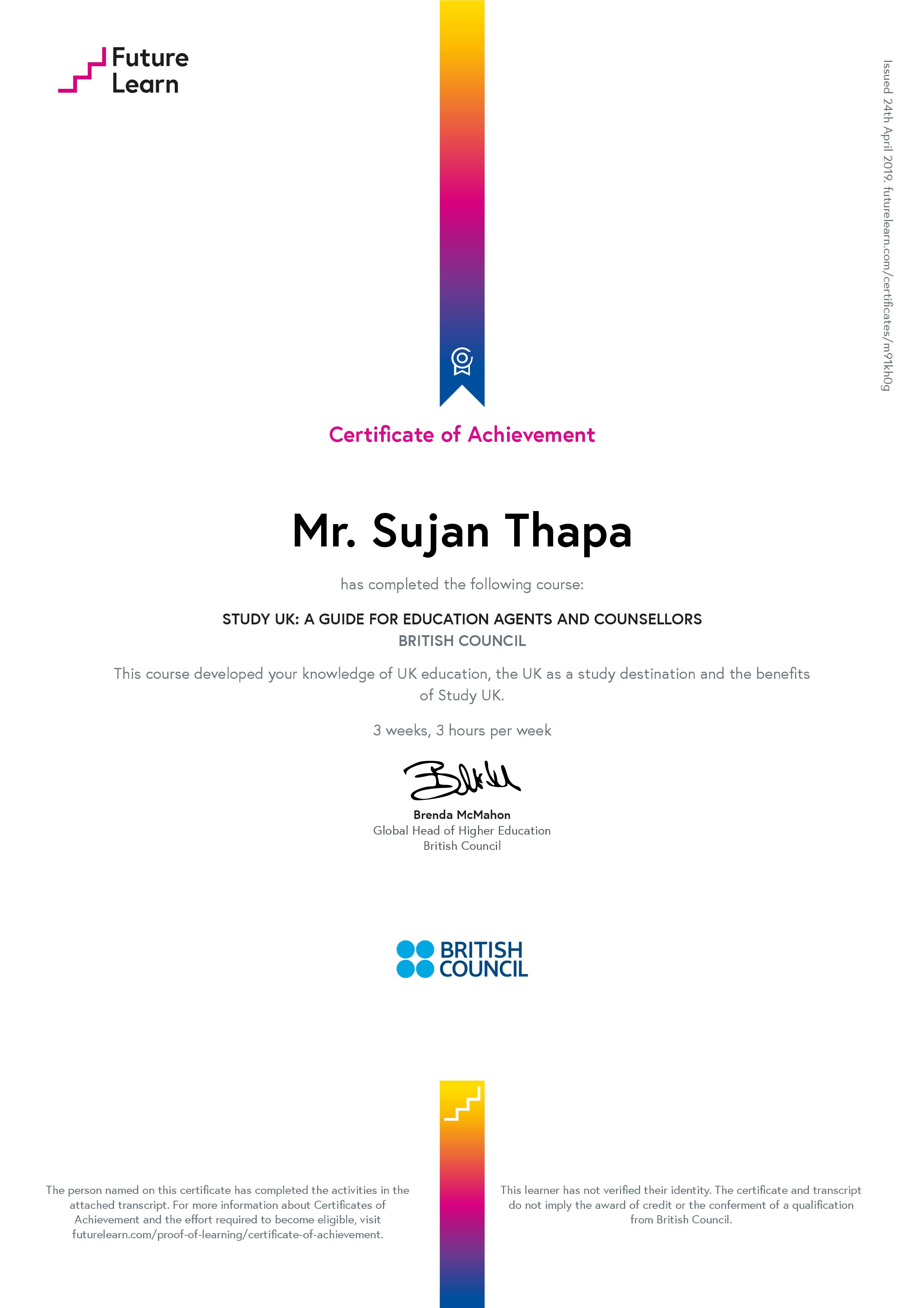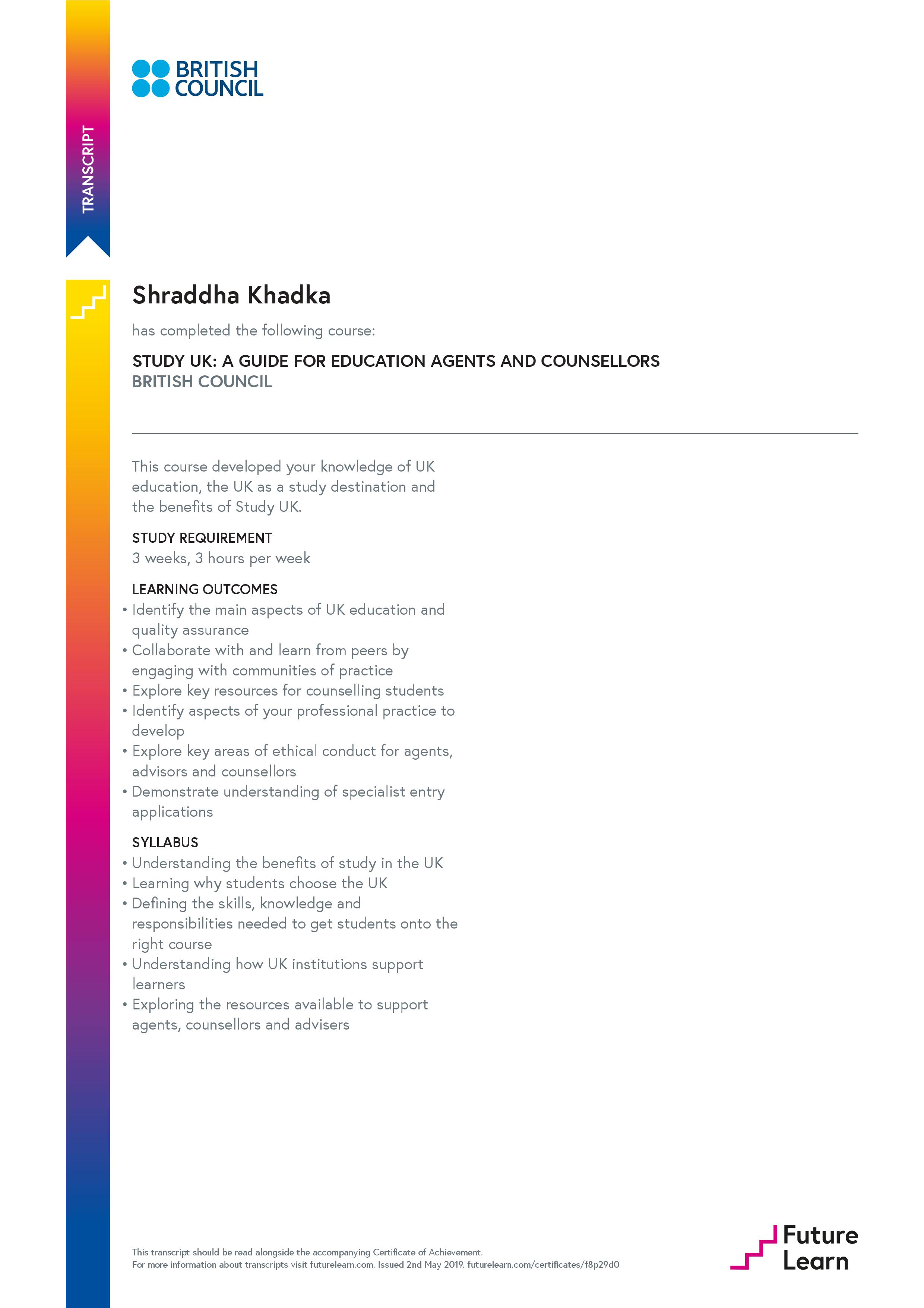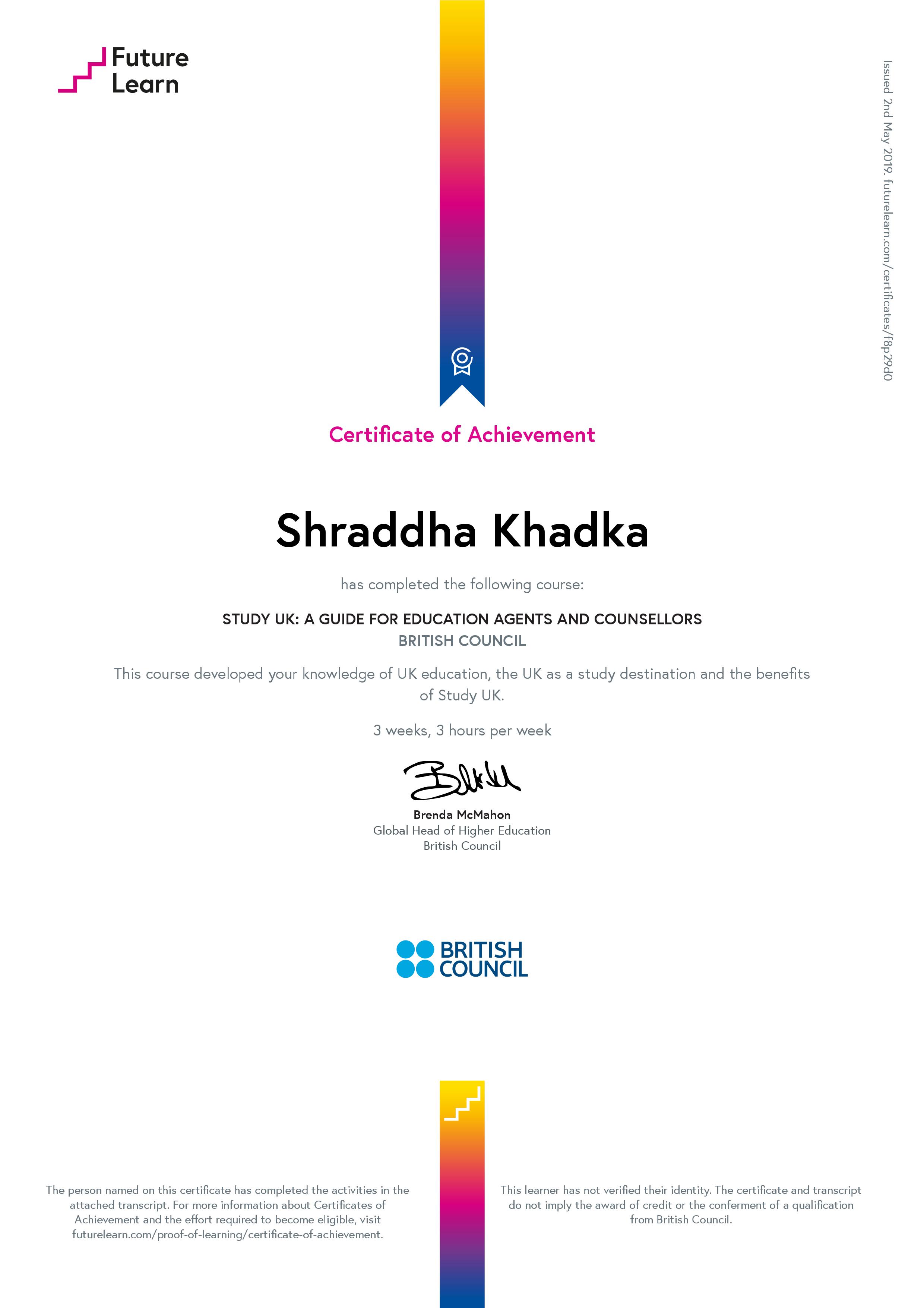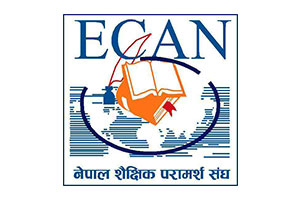LEARN IELTS FROM THE EXPERTS Of AIP Education
Generally, there are two modules in the IELTS test: Academic and General Training
The Listening, Reading, and Writing components of all IELTS tests are completed on the same day, with no breaks in between them.
The Speaking component, however, can be completed up to a week before or after the other tests.
About The IELTS Preparation In Nepal
The International English Language Testing System (IELTS) is designed to help you if you’re moving to a country where English is the primary language or if you’re looking to study or work there. This includes the USA, the UK, Canada, New Zealand, and Australia.
During the test, your ability to listen, read, write, and speak English will be evaluated. IELTS is scored on a scale from 1 to 9. The British Council, IDP: IELTS Australia, and Cambridge English collectively own IELTS.
Why Study IELTS At AIP Education?
If you are looking to work, live or study in an English-speaking country, then you must demonstrate a high English language ability. English is the third most spoken language in the world, with 379 million speakers worldwide.
There are several advantages to speaking the language of the nation you want to work or study in. Additionally, it is necessary for community integration and job prospects.
For people wishing to immigrate to countries like Australia, Canada, New Zealand, and the UK, IELTS is the test of choice. More than 11,000 employers, universities, schools, and immigration agencies around the world, including 3,400 institutions in the USA, recognize it.
IELTS For Study Abroad

IELTS testing is a prerequisite for many students who want to study in English-speaking nations like Australia, Canada, New Zealand, the United Kingdom, and the United States.
Each year, about 2 lakh students in Nepal take exams. There are several benefits to studying abroad in an English-speaking nation.
It may also enable you to pursue a career specialization or find employment after completing your studies. Over 11,000 education and training providers worldwide accept IELTS as a valid credential.
If the course is delivered in English, several colleges in non-English speaking nations also need an IELTS score.
About IELTS Test Preparation with AIP Education
In a 45-day course with flexible timings that runs from Sunday to Friday each week, we prepare students for the IELTS exam. Similarly, we provide courses that are both computer- and paper-based.
We perform a real mock test every week that is overseen and graded by our foreign instructor. In conclusion, we can state that test preparation at AIP is engaging and focuses on comprehending and presenting the material.
IELTS Test Date Booking:
To book a test for IELTS official there is 2 body in Nepal:
1. IDP
2. British council
Test locations Across Nepal: Kathmandu, Pokhara, Chitwan, Butwal, Jhapa, and Biratnagar.
IELTS Test Format
IELTS
The IELTS Academic test is suitable for those wanting to study in an English-speaking environment or university (higher education). You can also take IELTS Academic for professional registration purposes.
Students can request to send their IELTS results to up to five organizations free of charge. There is a fee for sending results to additional organizations. You can request your center to send your results as long as your IELTS scores are valid.
The IELTS General Training test is suitable for those applying to study below degree level.
This includes an English-speaking school or college.IELTS General Training is also required for migration to Australia, Canada, New Zealand and the UK. The test features everyday English language skills that you will need in social and workplace environments.
Which IELTS Test Type Is Right For me?
If you want to move to an English-speaking country to study, then you should take the IELTS Academic test. For work or immigration, the IELTS General Training test is recommended.
*Please check the entry requirements of your university before choosing your test.
Test Format Academic Writing
There are two types of IELTS: Academic and General Training. All test takers take the same Listening and Speaking tests but different Reading and Writing tests. Make sure that you prepare for the correct test type.
The Listening, Reading, and Writing sections of all IELTS tests are completed on the same day, with no breaks in between them.
The Speaking section, however, can be completed up to a week before or after the other tests. The total test time is 2 hours and 45 minutes.
Test Format – Listening (30 minutes)
You will listen to four recordings of native English speakers and then write your answers to a series of questions.
● Recording 1 – a conversation between two people set in an everyday social context.
● Recording 2 – a monologue set in an everyday social context, e.g. a speech about local facilities.
● Recording 3 – a conversation between up to four people set in an educational or training context, e.g. a university tutor and a student discussing an assignment.
● Recording 4 – a monologue on an academic subject, e.g. a university lecture.
Assessors will be looking for evidence of your ability to understand the main ideas and detailed factual information, the opinions and attitudes of speakers, the purpose of an utterance, and evidence of your ability to follow the development of ideas.
IELTS Listening Description
Paper format: There are four parts with ten questions each. The questions are designed so that the answers appear in the order they are heard in the audio.
The first two parts deal with situations set in everyday social contexts. In Part 1, there is a conversation between two speakers (for example, a conversation about travel arrangements), and in Part 2, there is a monologue in (for example, a speech about local facilities).
The final two parts deal with situations set in educational and training contexts. In Part 3, there is a conversation between two main speakers (for example, two university students in discussion, perhaps guided by a tutor), and in Part 4, there is a monologue on an academic subject.
The recordings are heard only once. They include a range of accents, including British, Australian, New Zealand, American and Canadian.
Timing: Approximately 30 minutes (plus 10 minutes of transfer time).
No. of questions: 40
Task types: A variety of question types are used, chosen from the following: multiple choice, matching, plan/map/diagram labeling, form/note/table/flow-chart/summary completion, and sentence completion.
Answering: Test takers write their answers on the question paper as they listen and at the end of the test are given 10 minutes to transfer their answers to an answer sheet. Care should be taken when writing answers on the answer sheet as poor spelling and grammar are penalized.
Marks: Each question is worth 1 mark.
IELTS Listening In Detail
A detailed look at the paper with links to related resources.
Task type 1 – Multiple choice
Task Type And Format:
In multiple choice tasks, there is a question followed by three possible answers or the beginning of a sentence followed by three possible ways to complete the sentence.
Test takers are required to choose the one correct answer - A, B, or C.
Sometimes, test takers are given a long list of possible answers and told that they have to choose more than one. In this case, they should read the question carefully to check how many answers are required.
Task focus: Multiple choice questions are used to test a wide range of skills. The test taker may be required to have a detailed understanding of specific points or an overall understanding of the main points of the listening text.
No. of questions: Variable
Task type 2 – Matching
Task type and format: Test takers are required to match a numbered list of items from the listening text to a set of options on the question paper. The set of options may be criteria of some kind.
Task focus: Matching assesses the skill of listening for detail and whether a test taker can understand the information given in a conversation on an everyday topic, such as the different types of hotel or guest house accommodation. It also assesses the ability to follow a conversation between two people. It may also be used to assess test takers’ ability to recognize relationships and connections between facts in the listening text.
No. of questions: Variable
Task type 3 – Plan, Map, Diagram Labeling
Task type and format: Test takers are required to complete labels on a plan (eg of a building), map (eg of part of a town), or diagram (e.g. of a piece of equipment). The answers are usually selected from a list on the question paper.
Task focus: This type of task assesses the ability to understand, for example, a description of a place, and to relate this to a visual representation.
This may include being able to follow language expressing spatial relationships and directions (e.g. straight on/through the far door).
No. of questions: Variable
Task type 4 – Form, note, table, flow-chart, summary completion
Task type and format: Test takers are required to fill in the gaps in an outline of part or of all of the listening text. The outline will focus on the main ideas/facts in the text. It may be:
1. a form: often used to record factual details such as names
2. a set of notes: used to summarise any type of information using the layout to show how different items relate to one another
3. a table: used as a way of summarising information that relates to clear categories – e.g. place/time/price,
4. a flowchart: used to summarise a process that has clear stages, with the direction of the process shown by arrows.
Test takers may have to select their answers from a list on the question paper or identify the missing words from the recording, keeping to the word limit stated in the instructions. Test takers do not have to change the words from the recording in any way.
Test takers should read the instructions very carefully as the number of words or numbers they should use to fill the gaps will vary. A word limit is given, for example, ‘NO MORE THAN TWO WORDS AND/OR A NUMBER. Test takers are penalized for writing more than the stated number of words, and test takers should check this word limit carefully for each task.
Contracted words will not be tested. Hyphenated words count as single words.
Task focus: This focuses on the main points that a listener would naturally record in this type of situation.
No. of questions: Variable
Task type 5 – Sentence completion
Task type and format: Test takers are required to read a set of sentences summarising key information from all the listening text or from one part of it. They then fill a gap in each sentence using information from the listening text. A word limit is given, for example, ‘NO MORE THAN ONE WORD AND/OR A NUMBER.
Test takers are penalized for writing more than the stated number of words. (Test takers should check this word limit carefully for each task: the limit is either ONE, TWO, or THREE words).
Contracted words will not be tested. Hyphenated words count as single words.
Task focus: Sentence completion focuses on the ability to identify the key information in a listening text. Test takers have to understand functional relationships such as cause and effect.
No. of questions: Variable
Task type 6 – Short-answer questions
Task type and format: Test takers are required to read a question and then write a short answer using information from the
listening text. A word limit is given, for example, ‘NO MORE THAN THREE WORDS AND/OR A NUMBER.
Test takers are penalized for writing more than the stated number of words. (Test takers should check this word limit carefully for each task.) Contracted words will not be tested.
Hyphenated words count as single words. Sometimes test takers are given a question which asks them to list two or three points.
Task focus: Sentence completion focuses on the ability to listen for concrete facts, such as places, prices, or times, within the listening text.
No. of questions: Variable
IELTS Listening – How is it marked?
The Listening test is marked by certificated markers, who are regularly monitored to ensure their reliability. All answer sheets, after being marked, are further analyzed by Cambridge English.
Band Score Conversion
A Band Score conversion table is produced for each version of the Listening test which translates scores out of 40 into the IELTS 9-band scale. Scores are reported in whole bands and half bands.
One mark is awarded for each correct answer in the 40-item test. Care should be taken when writing answers on the answer sheet as poor spelling and grammar are penalized.
Test Format – Reading (60 minutes)
The Reading section consists of 40 questions, designed to test a wide range of reading skills. These include reading for gist, reading for main ideas, reading for detail, skimming, understanding logical argument, and recognizing writers' opinions, attitudes and purpose.
IELTS Academic test - this includes three long texts which range from descriptive and factual to discursive and analytical. These are taken from books, journals, magazines, and newspapers. They have been selected for a non-specialist audience but are appropriate for people entering university courses or seeking professional registration.
IELTS Academic Reading description
Paper format: Three reading passages with a variety of questions using a number of task types.
Timing: 60 minutes
No. of questions: 40
Task types: A variety of question types are used, chosen from the following; multiple choice, identifying information, identifying the writer’s views/claims, matching information, matching headings, matching features, matching sentence endings, sentence completion, summary completion, note completion, table completion, flow-chart completion, diagram
label completion and short-answer questions.
Sources: Texts are taken from books, journals, magazines, and newspapers, and have been written for a non-specialist audience. All the topics are of general interest. They deal with issues that are interesting, recognizably appropriate, and accessible to test takers entering undergraduate or postgraduate courses or seeking professional registration.
The passages may be written in a variety of styles, for example, narrative, descriptive, or discursive/argumentative. At least one text contains a detailed logical argument. Texts may contain non-verbal materials such as diagrams, graphs, or illustrations. If texts contain technical terms a simple glossary is provided.
Answering: Test takers are required to transfer their answers to an answer sheet during the time allowed for the test. No extra time is allowed for transfer. Care should be taken when writing answers on the answer sheet as poor spelling and grammar are penalized.
Marks: Each question is worth 1 mark.
IELTS Academic Reading in detail
A detailed look at the paper with links to related resources.
Task type 1 – Multiple choice
Task type and format: Test takers are required to choose the best answer from four alternatives (A, B, C, or D), or the best two answers from five alternatives (A, B, C, D or E), or the best three answers from seven alternatives (A, B, C, D, E, F or G).
Test takers write the letter of the answer they have chosen on the answer sheet. The questions may involve completing a sentence, where they are given the first part of a sentence and then choose the best way to complete it from the options, or could involve complete questions; with the test, takers choosing the option which best answers them.
The questions are in the same order as the information in the text: that is, the answer to the first question in this group will be located in the text before the answer to the second question, and so on.
This task type may be used with any type of text.
Task focus: Multiple choice tests a wide range of reading skills, including a detailed understanding of specific points or an overall understanding of the main points of the text.
No. of questions: Variable
Task type 2 – Identifying information
Task type and format: Test takers will be given a number of statements and asked: ‘Do the following statements agree with the information in the text?’ They are then required to write ‘true’, ‘false’, or ‘not given in the boxes on their answer sheets.
It is important to understand the difference between 'false' and 'not given. 'False' means that the passage states the opposite of the statement in question; 'not given' means that the statement is neither confirmed nor contradicted by the information in the passage.
Students need to understand that any knowledge they bring with them from outside the passage should not play a part when deciding on their answers.
Task focus: Identifying information assesses the test takers’ ability to recognize particular points of information conveyed in the text. It can thus be used with more factual texts.
No. of questions: Variable
Task type 3 – Identifying the writer’s views/claims
Task type and format: Test takers will be given a number of statements and asked: ‘Do the following statements agree with the views/claims of the writer?’ They are required to write ‘yes’, ‘no’, or ‘not given in the boxes on their answer sheet.
It is important to understand the difference between 'no' and 'not given.
'No' means that the views or claims of the writer explicitly disagree with the statement, i.e. the writer somewhere expresses the view or makes a claim which is opposite to the one given in the question; 'not given' means that the view or claim is neither confirmed nor contradicted.
Students need to understand that any knowledge they bring with them from outside the passage should not play a part when deciding on their answers.
Task focus: This type of task assesses the test takers’ ability to recognize opinions or ideas, and so it is often used with discursive or argumentative texts.
No. of questions: Variable
Task type 4 – Matching information
Task type and format: Test takers are required to locate specific information within the lettered paragraphs/sections of a text, and to write the letters of the correct paragraphs/sections in the boxes on their answer sheet.
They may be asked to find: specific details, an example, a reason, a description, a comparison, a summary, or an explanation.
They will not necessarily need to find information in every paragraph/section of the text, but there may be more than one piece of information that test takers need to locate in a given paragraph/section. When this is the case, they will be told that they can use any letter more than once.
This type of task can be used with any text as it tests a wide range of reading skills, from locating detail to recognizing a summary or definition.
Task focus: Matching information assesses the test takers’ ability to scan for specific information. Unlike task type 5, Matching headings, it is concerned with specific information rather than with the main idea.
No. of questions: Variable
Task type 5 – Matching headings
Task type and format: Test takers are given a list of headings, usually identified with lower-case Roman numerals (i, ii, iii, etc,). A heading will refer to the main idea of the paragraph or section of the text. Test takers must match the heading to the correct paragraphs or sections, which are marked alphabetically.
Test takers write the appropriate Roman numerals in the boxes on their answer sheets.
There will always be more headings than there are paragraphs or sections so some headings will not be used.
It is also possible that some paragraphs or sections may not be included in the task. One or more paragraphs or sections may already be matched with a heading as an example for test takers. This task type is used with texts that contain paragraphs or sections with clearly defined themes.
Task focus: Matching headers tests the test takers’ ability to recognize the main idea or theme in the paragraphs or sections of a text, and to distinguish main ideas from supporting ones.
No. of questions: Variable
Task type 6 – Matching features
Task type and format: Test takers are required to match a set of statements or pieces of information to a list of options. The options are a group of features from the text and are identified by letters. Test takers may, for example, be required to match different research findings to a list of researchers, or characteristics to age groups, events to historical periods, etc.
It is possible that some options will not be used, and that others may be used more than once. The instructions will inform test takers if options may be used more than once.
Task focus: Matching features assesses the test takers’ ability to recognize relationships and
connections between facts in the text and their ability to recognize opinions and theories. It may be used both with factual information, as well as opinion-based discursive texts. Test takers need to be able to skim and scan the text in order to locate the required information and to read for detail.
No. of questions: Variable
Task type 7 – Matching sentence endings
Task type and format: Test takers are given the first half of a sentence based on the text and
asked to choose the best way to complete it from a list of possible options. They will have more options to choose from than there are questions.
Test takers must write the letter they have chosen on the answer sheet. The questions are in the same order as the information in the passage: that is, the answer to the first question in this group will be found before the answer to the second question, and so on. This task type may be used with any type of text.
Task focus: Matching sentence endings assesses the test takers’ ability to understand the main ideas within a sentence.
No. of questions: Variable
Task type 8 – Sentence completion
Task type and format: Test takers complete sentences in a given number of words taken from the text. They must write their answers on the answer sheet.
The instructions will make it clear how many words/numbers test takers should use in their answers, e.g. ‘NO MORE THAN THREE WORDS AND/OR A NUMBER from the passage’, ‘ONE WORD ONLY’ or ‘NO MORE THAN TWO
WORDS’. If test takers write more than the number of words asked for, they will lose the mark. Numbers can be written using figures or words. Contracted words will not be tested.
Hyphenated words count as single words. The questions are in the same order as the information in the passage: that is, the answer to the first question in this group will be found before the answer to the second question, and so on. This task type may be used with any type of text.
Task focus: Matching sentence endings assesses the test takers’ ability to locate detailed/specific information.
No. of questions: Variable
Task type 9 – Summary, note, table, flow-chart completion
Task type and format: Test takers are given a summary of a section of the text, and are required to complete it with information drawn from the text. The summary will usually be of only one part of the passage rather than the whole.
The given information may be in the form of several connected sentences of text (referred to as a summary), several notes (referred to as notes), a table with some of its cells empty or partially empty (referred to as a table), a series of boxes or steps linked by arrows to show a sequence of events, with some of the boxes or steps empty or partially empty (referred to as a flow-chart).
The answers will not necessarily occur in the same order as in the text. However, they will usually come from one section rather than the entire text.
There are two variations of this task type. Test takers may be asked either to select words from the text or to select from a list of answers.
Where words have to be selected from the passage, the instructions will make it clear how many words/numbers test takers should use in their answers, e.g. ‘NO MORE THAN THREE WORDS AND/OR A NUMBER from the passage’, ‘ONE WORD ONLY’ or ‘NO MORE THAN TWO WORDS’.
If test takers write more than the number of words asked for, they will lose the mark. Numbers can be written using figures or words. Contracted words are not tested.
Hyphenated words count as single words. Where a list of answers is provided, they most frequently consist of a single word.
Because this task type often relates to precise factual information, it is often used with descriptive texts.
Task focus: Summarising assesses the test takers’ ability to understand details and/or the main ideas of a section of text. In the variations involving a summary or notes, test takers need to be aware of the type of word(s) that will fit into a given gap (for example, whether a noun is needed, or a verb, etc.).
No. of questions: Variable
Task type 10 – Diagram label completion
Task type and format: Test takers are required to complete labels on a diagram, which relates to a description contained in the text.
The instructions will make it clear how many words/numbers test takers should use in their answers, e.g. ‘NO MORE THAN THREE WORDS AND/OR A NUMBER from the passage’, ‘ONE WORD ONLY’ or ‘NO MORE THAN TWO WORDS’.
If test takers write more than the number of words asked for, they will lose the mark. Numbers can be written using figures or words. Contracted words will not be tested. Hyphenated words count as single words. The answers do not necessarily occur in order in the passage. However, they will usually come from one section rather than the entire text.
The diagram may be of some type of machine, of parts of a building, or of any other element that can be represented pictorially. This task type is often used with texts describing processes or with descriptive texts.
Task focus: Diagram label completion assesses the test takers’ ability to understand a detailed description, and to relate it to information presented in the form of a diagram.
No. of questions: Variable
Task type 11 – Short-answer questions
Task type and format: Test takers answer questions, which usually relate to factual information about details in the text. This is most likely to be used with a text that contains a lot of factual information and detail.
Test takers must write their answers in words or numbers on the answer sheet.
Test takers must write their answers using words from the text. The instructions will make it clear how many words/numbers test takers should use in their answers, e.g. ‘NO MORE THAN THREE WORDS AND/OR A NUMBER from the passage’, ‘ONE WORD ONLY’ or ‘NO MORE THAN TWO WORDS’.
If test takers write more than the number of words asked for, they will lose the mark. Numbers can be written using figures or words. Contracted words are not tested. Hyphenated words count as single words. The questions are in the same order as the information in the text.
Task focus: Short answer questions assess the test takers’ ability to locate and understand precise information in the text.
No. of questions: Variable
IELTS Academic Reading – how it's marked
The Academic Reading test is marked by certificated markers, who are regularly monitored
to ensure reliability. All answer sheets, after being marked, are further analyzed by
Cambridge English.
Band score conversion
A Band Score conversion table is produced for each version of the Academic Reading test,
which translates scores out of 40 into the IELTS 9-band scale. Scores are reported in whole
bands and half bands.
Test Format – Reading (60 minutes)
Topics are of general interest to, and suitable for, test takers entering undergraduate and postgraduate studies or seeking professional registration.
There are two tasks:
● Task 1 - you will be presented with a graph, table, chart, or diagram and asked to describe, summarise or explain the information in your own words. You may be asked to describe and explain data, describe the stages of a process, how something
works, or describe an object or event.
● Task 2 - you will be asked to write an essay in response to a point of view, argument or problem. Responses to both tasks must be in a formal style.
IELTS Academic Writing description
Paper format: There are two Writing tasks and BOTH must be completed.
Timing: 60 minutes
No. of questions: 2
Task types: In Task 1, test takers are asked to describe some visual information (graph/table/chart/diagram) in their own words. They need to write 150 words in about 20 minutes. In Task 2, they respond to a point of view or argument, or problem. They need to write 250 words in about 40 minutes.
Answering: Answers must be given on the answer sheet and must be written in full. Notes or bullet points are not acceptable as answers. Test takers may write on the question paper but this cannot be taken from the examination room and will not be seen by the examiner.
A detailed look at the paper with links to related resources.
Task 1
Task type and format: In Writing Task 1, test takers may be asked to describe facts or figures presented in one or more graphs, charts, or tables on a related topic; or they may be given a diagram of a machine, a device or a process and asked to explain how it works.
They should write in an academic or semi-formal/neutral style and include the most important and relevant points in the diagram. Some minor points or details may be left out.
Test takers should spend no more than 20 minutes on this task. They are asked to write at least 150 words and will be penalized if their answer is too short.
While test-takers will not be penalized for writing more than 150 words, they should remember that a longer Task 1 answer may mean that they have less time to spend on Task 2, which contributes twice as much to the Writing band score.
Test takers should also note that they will be penalized for irrelevance if the response is off-topic or is not written as full, connected text (e.g. using bullet points in any part of the response, or note form, etc.). They will be severely penalized for plagiarism (i.e. copying from another source).
Test takers must write their answers on the answer booklet.
Task focus: This task assesses the ability to identify the most important and relevant information and trends in a graph, chart, table, or diagram, and to give a well-organized overview of it using language accurately in an academic style.
No. of questions: 1
Task 2
Task type and format: In Writing Task 2, test takers are given a topic to write about in an
academic or semi-formal/neutral style. Answers should be a discursive consideration of the relevant issues. Test takers should make sure that they read the task carefully and provide a full and relevant response. For example, if the topic is a particular aspect of computers, they should focus on this aspect in their response. They should not simply write about
computers in general.
Test takers should spend no more than 40 minutes on this task. They are asked to write at least 250 words and will be penalized if their answer is too short. While test-takers will not be penalized for writing more than 250 words, if they write a very long answer they may not have time for checking and correcting at the end and some ideas may not be directly
relevant to the question.
Task 2 contributes twice as much to the final Writing band score as Task 1. Therefore, test takers who fail to attempt to answer this task will greatly reduce their chance of achieving a good band.
Test takers will be penalized for irrelevance if the response is off-topic or is not written as full, connected text (e.g. using bullet points in any part of the response, note form, etc.).
They will be severely penalized for plagiarism (i.e. copying from another source). Finally, test takers should make sure that they do not copy directly from the question paper because this will not be assessed.
Must write their answers on the answer booklet.
Task focus: This task assesses the ability to present a clear, relevant, well-organized argument, giving evidence or examples to support ideas and use language accurately.
No. of questions: 1
IELTS Academic Writing - How it's marked
Marking and assessment
Each task is assessed independently. The assessment of Task 2 carries more weight in marking than Task 1.
Responses are assessed by certificated IELTS examiners. All IELTS examiners hold relevant teaching qualifications and are recruited as examiners by the test centers and approved by the British Council or IDP: IELTS Australia.
Scores are reported in whole and half bands. Detailed performance descriptors have been developed which describe written performance at the nine IELTS bands. These are available on the How IELTS is scored page. They apply to both IELTS Academic and IELTS General Training versions and are based on the following criteria.
Task 1 responses are assessed on the:
● Task achievement
● Coherence and cohesion
● Lexical resource
● Grammatical range and accuracy.
Ta sk 2 responses are assessed on:
● Task response
● Coherence and cohesion
● Lexical resource
● Grammatical range and accuracy.
Performance descriptors
Task 1
Task achievement
This assesses how appropriately, accurately, and relevantly the response fulfills the requirements set out in the task, using a minimum of 150 words. Academic Writing Task 1 is a writing task that has a defined input and a largely predictable output.
It is basically an information-transfer task that relates narrowly to the factual content of an input diagram and not to speculative explanations that lie outside the given data.
Coherence and cohesion
This concerns overall clarity and fluency: how the response organizes and links information, ideas, and language. Coherence refers to the linking of ideas through logical sequencing.
Cohesion refers to the varied and appropriate use of cohesive devices (for example, logical connectors, pronouns, and conjunctions) to assist in making the conceptual and referential relationships between and within sentences clear.
Lexical resource
This refers to the range of vocabulary used and its accuracy and appropriacy in terms of the
specific task.
Grammatical range and accuracy
This refers to the range and accurate use of grammar as manifested in their sentence
writing.
Task 2
Task response
In both IELTS Academic and IELTS General Training versions, Task 2 requires test takers to formulate and develop a position in relation to a given prompt in the form of a question or statement. Ideas should be supported by evidence, and examples may be drawn from the test takers’ own experience. Responses must be at least 250 words in length. Scripts under the required minimum word limit will be penalized.
Coherence and cohesion
This assesses the overall clarity and fluency of the message: how the response organizes and links information, ideas, and language. Coherence refers to the linking of ideas through logical sequencing. Cohesion refers to the varied and appropriate use of cohesive devices (for example, logical connectors, pronouns, and conjunctions) to assist in making the
conceptual and referential relationships between and within sentences clear.
Lexical resource
This criterion refers to the range of vocabulary used and its accuracy and appropriacy in terms of the specific task.
Grammatical range and accuracy. This assesses the range and accurate use of grammar, as manifested in their test takers’
writing at the sentence level.
Test format – Speaking (11–14 minutes)
The speaking section assesses your use of spoken English. Every test is recorded.
● Part 1 - the examiner will ask you general questions about yourself and a range of familiar topics, such as home, family, work, studies, and interests. This part lasts between four and five minutes.
● Part 2 - you will be given a card that asks you to talk about a particular topic. You will have one minute to prepare before speaking for up to two minutes. The examiner will then ask one or two questions on the same topic.
● Part 3 - you will be asked further questions about the topic in Part 2. These will give you the opportunity to discuss more abstract ideas and issues. This part of the test lasts between four and five minutes.
IELTS Speaking description
Paper format: The Speaking test consists of an oral interview between the test takers' and an examiner. All Speaking tests are recorded.
Timing: 11–14 minutes
Task types: There are three parts to the test and each part fulfills a specific function in terms of interaction pattern, task input, and test takers output.
IELTS Speaking in detail
A detailed look at the paper with links to related resources.
Part 1 – Introduction and interview
Task type and format: In this part, the examiner introduces him/herself and checks the test takers' identity. They then ask the test takers general questions on some familiar topics such as home, family, work, studies, and interests. To ensure consistency, questions are taken from a script. Part 1 lasts for 4–5 minutes.
Task focus: This part of the test focuses on the ability to communicate opinions and
information on everyday topics and common experiences or situations by answering a range of questions.
No. of questions: Variable
Part 2 – Long turn
Task type and format: Part 2 is the individual long turn. The examiner gives the test takers a task card that asks the test takers to talk about a particular topic, includes points to cover in their talk, and instructs the test takers to explain one aspect of the topic.
Test takers are given one minute to prepare their talk, and are given a pencil and paper to make notes. The examiner asks the test takers to talk for 1 to 2 minutes, stops the test takers after 2 minutes, and asks one or two questions on the same topic.
Using the points on the task card effectively, and making notes during the preparation time, will help the test takers think of appropriate things to say, structure their talk, and keep talking for 2 minutes.
Part 2 lasts 3–4 minutes, including the preparation time.
Task focus: This part of the test focuses on the ability to speak at length on a given topic (without further prompts from the examiner), using appropriate language and organizing ideas coherently. It is likely that the test takers will need to draw on their own experience to complete the long turn.
No. of questions: Variable
Part 3 – Discussion
Task type and format: In Part 3, the examiner and the test takers discuss issues related to the topic in Part 2 in a more general and abstract way and, where appropriate, in greater depth. Part 3 lasts 4–5 minutes.
Task focus: This part of the test focuses on the ability to express and justify opinions and to analyze, discuss and speculate about issues.
No. of questions: Variable
IELTS Speaking - How it's marked
Marking and assessment
Speaking performances are assessed by certificated IELTS examiners. All IELTS examiners hold relevant teaching qualifications and are recruited as examiners by the test centers and approved by the British Council or IDP: IELTS Australia.
Scores are reported in whole and half bands. Detailed performance descriptors have been developed which describe spoken performance at the nine IELTS bands. These are available on the How IELTS is scored page.
Fluency and coherence
This refers to the ability to talk with normal levels of continuity, rate, and effort and to link ideas and language together to form coherent, connected speech.
The key indicators of fluency are speech rate and speech continuity. The key indicators of coherence are logical sequencing of sentences, clear marking of stages in a discussion, narration, or argument, and the use of cohesive devices (e.g. connectors, pronouns, and conjunctions) within and between sentences.
Lexical resource
This criterion refers to the range of vocabulary used and the precision with which meanings and attitudes can be expressed.
The key indicators are the variety of words used, the adequacy and appropriacy of the words used, and the ability to circumlocute (get around a vocabulary gap by using other words) with or without noticeable hesitation.
Grammatical range and accuracy This refers to the range and the accurate and appropriate use of the test takers' grammatical
resources.
The key indicators of the grammatical range are the length and complexity of the spoken sentences, the appropriate use of subordinate clauses, and the range of sentence structures, especially to move elements around for information focus.
The key indicators of grammatical accuracy are the number of grammatical errors in a given amount of speech
and the communicative effect of the error.
Pronunciation
This criterion refers to the ability to produce comprehensible speech to fulfill the Speaking test requirements.
The key indicators will be the amount of strain caused to the listener, the amount of speech that is unintelligible, and the noticeability of L1 influence.
Our Experts will help you with :
Pre-Departure Guidelines
Our job doesn't end with your successful visa grant rather it begins from there. We give proper pre-departure guidelines to students using tools like FAQ's , Student guidelines and prepare them for any foreseeable problems after the visa has been approved.
Interview
We assist students to face and prepare for University interviews which can be a key part of admission application across various Universities and destinations. We do conduct mock interviews and give ready guidelines to our students.
Documentation Guidelines
AIP offers students a detailed and step-by-step guidance regarding the documents that a student requires for a particular destination along with guiding students on how to obtain these relevant documents to smoothen their application process.
University Application Assistance
We help your select the perfect Institution for you and also assist you at each stage of your admission application process. Students are notified via email and sms service about their application updates.
Student Counseling
Our team of expert and experienced counselors offer counseling services to students so that we can understand your and your preferred career choice and suggest you the best fit.
Accolades
